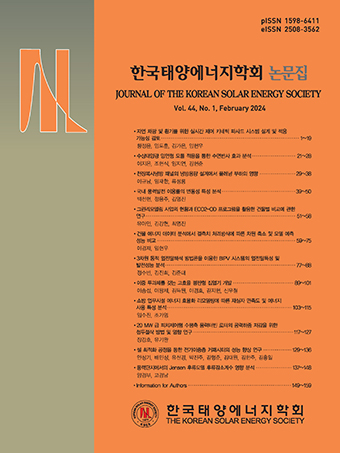Research Article
Abstract
References
Information
- Publisher :Korean Solar Energy Society
- Publisher(Ko) :한국태양에너지학회
- Journal Title :Journal of the Korean Solar Energy Society
- Journal Title(Ko) :한국태양에너지학회 논문집
- Volume : 39
- No :4
- Pages :79-91
- Received Date : 2019-06-17
- Revised Date : 2019-07-31
- Accepted Date : 2019-08-26
- DOI :https://doi.org/10.7836/kses.2019.39.4.079



 Journal of the Korean Solar Energy Society
Journal of the Korean Solar Energy Society








